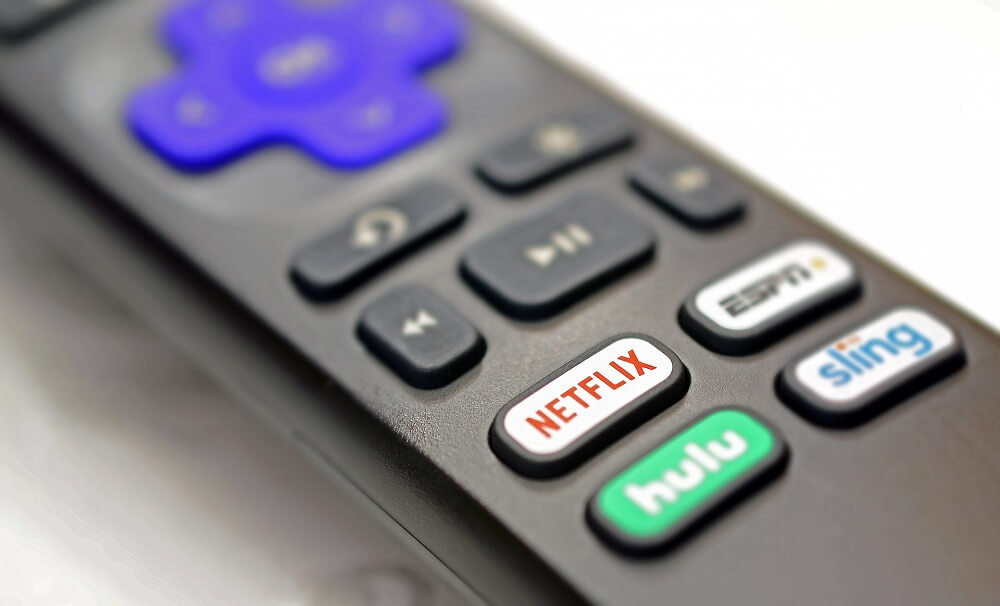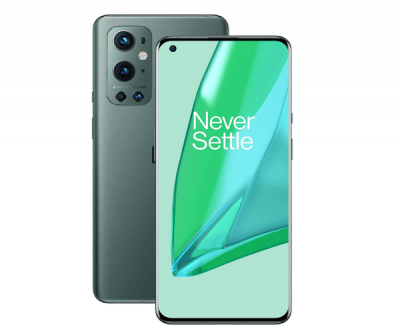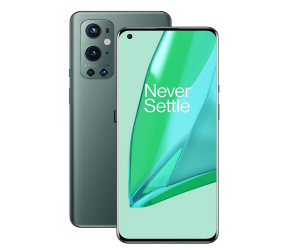How the streaming market eats itself up
Do you know the situation where you would like to watch a good film or a series, and first rummage through a thicket of offers, all of which are from different streaming providers, and sometimes even require an additional subscription, or only in an advertising-supported model Are available? And in the end your brain is so flooded with search results and options that you can’t make up your mind and just watch anything or turn off the TV altogether. Believe me, you are not alone with the problem of media overload and options that all want to hit your wallet!
At a time when streaming services have revolutionized television, we are witnessing a new wave of fragmentation. Instead of having the freedom to stream everything in one place, consumers are now faced with a deluge of providers, each offering exclusive content. But what does that mean for us as consumers?

How the streaming market eats itself up
Do you know the situation where you would like to watch a good film or a series, and first rummage through a thicket of offers, all of which are from different streaming providers, and sometimes even require an additional subscription, or only in an advertising-supported model Are available? And in the end your brain is so flooded with search results and options that you can’t make up your mind and just watch anything or turn off the TV altogether. Believe me, you are not alone with the problem of media overload and options that all want to hit your wallet!
At a time when streaming services have revolutionized television, we are witnessing a new wave of fragmentation. Instead of having the freedom to stream everything in one place, consumers are now faced with a deluge of providers, each offering exclusive content. But what does that mean for us as consumers?

The golden era of streaming
The golden era of streaming
There was a time, not too long ago, when streaming killed video stores and consuming content was a simple and straightforward affair. Netflix and Amazon Prime dominated the market and offered an impressive collection of movies, series and documentaries. For a modest monthly fee, users had access to a world of entertainment without commercial breaks and with the freedom to watch when and where they wanted.
“The two giants invested heavily in original content, resulting in hits like ‘Stranger Things’ and ‘The Marvelous Mrs. Maisel.’ These exclusive productions attracted millions of viewers and cemented these platforms’ positions as leaders in the streaming world.”
However, alongside this original content, they also offered a variety of licensed content. Classic films, popular TV shows and international hits were all found under one roof. It was a time of plenty and simplicity for consumers. There was no need to switch between different platforms or wonder which service was running which show. It was the golden era of streaming, where quality and quantity went hand in hand and the consumer was the focus.
Netflix pioneered streaming
Since its inception in 1997, Netflix has revolutionized the way we consume movies and series. Originally started as a DVD rental service by mail, the company recognized the potential of online streaming early on. In 2007, Netflix launched the streaming service, laying the foundation for a new era of television. With an ever-expanding library and the production of its own original content, Netflix set standards in the industry and coined the term “binge-watching”. As a pioneer, Netflix paved the way for many subsequent streaming services and remains one of the dominant players in the market to this day.
The birth of Amazon Prime Video
In September 2006, Amazon entered the world of digital video streaming with the launch of Amazon Unbox. This was the e-commerce giant’s first foray into online entertainment. Over time, the service evolved, renamed to Prime Video and integrated with the popular Amazon Prime subscription. With a mix of licensed content and stunning original productions, Prime Video has quickly become a major player in the streaming market and today offers a wide range of films, series and documentaries to viewers worldwide.
There was a time, not too long ago, when streaming killed video stores and consuming content was a simple and straightforward affair. Netflix and Amazon Prime dominated the market and offered an impressive collection of movies, series and documentaries. For a modest monthly fee, users had access to a world of entertainment without commercial breaks and with the freedom to watch when and where they wanted.
“The two giants invested heavily in original content, resulting in hits like ‘Stranger Things’ and ‘The Marvelous Mrs. Maisel.’ These exclusive productions attracted millions of viewers and cemented these platforms’ positions as leaders in the streaming world.”
However, alongside this original content, they also offered a variety of licensed content. Classic films, popular TV shows and international hits were all found under one roof. It was a time of plenty and simplicity for consumers. There was no need to switch between different platforms or wonder which service was running which show. It was the golden era of streaming, where quality and quantity went hand in hand and the consumer was the focus.
Netflix pioneered streaming
Since its inception in 1997, Netflix has revolutionized the way we consume movies and series. Originally started as a DVD rental service by mail, the company recognized the potential of online streaming early on. In 2007, Netflix launched the streaming service, laying the foundation for a new era of television. With an ever-expanding library and the production of its own original content, Netflix set standards in the industry and coined the term “binge-watching”. As a pioneer, Netflix paved the way for many subsequent streaming services and remains one of the dominant players in the market to this day.
The birth of Amazon Prime Video
In September 2006, Amazon entered the world of digital video streaming with the launch of Amazon Unbox. This was the e-commerce giant’s first foray into online entertainment. Over time, the service evolved, renamed to Prime Video and integrated with the popular Amazon Prime subscription. With a mix of licensed content and stunning original productions, Prime Video has quickly become a major player in the streaming market and today offers a wide range of films, series and documentaries to viewers worldwide.
Fragmentation of the streaming market
Fragmentation of the streaming market
As already mentioned, the early days of the streaming market were characterized by a handful of dominant providers offering a wide range of content. But as time went by and the growing success of the streaming model, many companies saw an opportunity for a piece of the pie. This led to an explosion of new and specialized streaming services.
- Exclusivity as a key strategy
One of the main reasons for the fragmentation of the market is the strategy of exclusivity. Big media conglomerates realized that by creating their own streaming platforms, they would have more control over their content and, in turn, revenue. For example, Disney pulled many of its most popular titles from other platforms and launched Disney+. NBC proceeded similarly with Peacock, WarnerMedia with HBO Max and many others. These services entice customers with the promise of exclusive content that cannot be found anywhere else.
- The challenge for smaller producers
While big media houses were able to create their own platforms, smaller producers and independent filmmakers were looking for ways to monetize their content. This led to the emergence of niche streaming services that focus on specific genres, cultures or interests. You can often find something like this at Prime Video with the add-on options (e.g. Crime Channel, Classics , documentary channel, etc.). These can then usually be booked for a price of EUR 3.99 per month. But let’s not forget that this is a so-called psychological or threshold price acts. Because it’s actually 4 euros a month. And that for an option that you probably only use seldom. The sum of the many small -4 euros per month subscriptions- can then make up a considerable amount per month.
- Global expansion and regional services:
With the global expansion of streaming services, regional providers have also emerged, offering local content in specific countries or regions. These services often compete head-to-head with the global giants, but offer content that is more culturally relevant and often in regional languages.
- The consequences for the consumer:
Fragmentation has led to market flooding. Consumers are now faced with the difficult task of deciding which services to subscribe to. They often have to purchase multiple subscriptions to see all of their favorite shows and movies. So this not only leads to higher costs, but also to a fragmentation of the viewing experience. In short: The consumer is less and less transparent!
As already mentioned, the early days of the streaming market were characterized by a handful of dominant providers offering a wide range of content. But as time went by and the growing success of the streaming model, many companies saw an opportunity for a piece of the pie. This led to an explosion of new and specialized streaming services.
- Exclusivity as a key strategy
One of the main reasons for the fragmentation of the market is the strategy of exclusivity. Big media conglomerates realized that by creating their own streaming platforms, they would have more control over their content and, in turn, revenue. For example, Disney pulled many of its most popular titles from other platforms and launched Disney+. NBC proceeded similarly with Peacock, WarnerMedia with HBO Max and many others. These services entice customers with the promise of exclusive content that cannot be found anywhere else.
- The challenge for smaller producers
While big media houses were able to create their own platforms, smaller producers and independent filmmakers were looking for ways to monetize their content. This led to the emergence of niche streaming services that focus on specific genres, cultures or interests. You can often find something like this at Prime Video with the add-on options (e.g. Crime Channel, Classics , documentary channel, etc.). These can then usually be booked for a price of EUR 3.99 per month. But let’s not forget that this is a so-called psychological or threshold price acts. Because it’s actually 4 euros a month. And that for an option that you probably only use seldom. The sum of the many small -4 euros per month subscriptions- can then make up a considerable amount per month.
- Global expansion and regional services:
With the global expansion of streaming services, regional providers have also emerged, offering local content in specific countries or regions. These services often compete head-to-head with the global giants, but offer content that is more culturally relevant and often in regional languages.
- The consequences for the consumer:
Fragmentation has led to market flooding. Consumers are now faced with the difficult task of deciding which services to subscribe to. They often have to purchase multiple subscriptions to see all of their favorite shows and movies. So this not only leads to higher costs, but also to a fragmentation of the viewing experience. In short: The consumer is less and less transparent!
Consumer cost explosion for streaming services
Consumer cost explosion for streaming services
As streaming has grown in popularity and more players have entered the market, the financial picture for consumers has also changed drastically.
- More providers, more subscriptions
With the advent of specialized streaming services like Disney+, HBO Max, Apple TV+ and others have spread the content across different platforms. Each of these services has its own exclusive shows and movies, meaning consumers need multiple subscriptions to see all of their favorite content. A subscription may seem cheap, but when you combine several, the costs quickly add up.
- Loss of Licensed Content
Many of the major streaming services have started losing their licensed content as the original rights holders launch their own streaming platforms. This forces consumers to purchase additional subscriptions to continue having access to this content.
- Constant price increases
As the production of high-quality original content is expensive and competition is growing, some of the established streaming services have either increased their prices or moved content that actually belongs in the subscription to an additional ad-supported model (e.g. Amazon Freevee) outsourced. This not only puts an additional financial burden on consumers, but also gets on their nerves. Especially if you already have several subscriptions, most of which are hardly ever used.
- Hidden costs
In addition to the obvious subscription costs, there are often hidden costs. For example, some services offer different subscription levels, with higher quality levels or additional screens costing more. Unfortunately, the bad habit of charging additional fees for advertising-free streaming is becoming more common with more and more providers. With this tactic, the providers try to keep the subscription price at an accepted market price and make up the difference through advertising revenue.
As streaming has grown in popularity and more players have entered the market, the financial picture for consumers has also changed drastically.
- More providers, more subscriptions
With the advent of specialized streaming services like Disney+, HBO Max, Apple TV+ and others have spread the content across different platforms. Each of these services has its own exclusive shows and movies, meaning consumers need multiple subscriptions to see all of their favorite content. A subscription may seem cheap, but when you combine several, the costs quickly add up.
- Loss of Licensed Content
Many of the major streaming services have started losing their licensed content as the original rights holders launch their own streaming platforms. This forces consumers to purchase additional subscriptions to continue having access to this content.
- Constant price increases
As the production of high-quality original content is expensive and competition is growing, some of the established streaming services have either increased their prices or moved content that actually belongs in the subscription to an additional ad-supported model (e.g. Amazon Freevee) outsourced. This not only puts an additional financial burden on consumers, but also gets on their nerves. Especially if you already have several subscriptions, most of which are hardly ever used.
- Hidden costs
In addition to the obvious subscription costs, there are often hidden costs. For example, some services offer different subscription levels, with higher quality levels or additional screens costing more. Unfortunately, the bad habit of charging additional fees for advertising-free streaming is becoming more common with more and more providers. With this tactic, the providers try to keep the subscription price at an accepted market price and make up the difference through advertising revenue.
Consumer behavior and future prospects
Consumer behavior and future prospects
With the rise of streaming services, we are witnessing a clear fragmentation of the market. This has influenced and changed consumer behavior in many ways:
- Multiple Subscriptions: Many consumers find themselves in the situation of having to purchase multiple subscriptions to watch all of their favorite shows and movies. This can lead to “subscription fatigue” where users lose track of their monthly spend.
- Return to Traditional TV: Some consumers, overwhelmed by the complexities and rising costs of streaming, prefer to return to more traditional television options or narrow down to fewer streaming services. The point must be made, but I also maintain that this is the smallest group. Because there were good reasons why people switched from classic linear TV to streaming, or at least shifted the majority of TV consumption to it. And while there are downsides to streaming, the upsides still outweigh the downsides. This is especially true in comparison to private TV stations such as RTL, Pro7 & Co. where you almost see yourself exposed to a form of advertising terror!
- Piracy: Fragmentation has also led to a rise in piracy as some consumers are unwilling to pay for multiple services and instead choose illegal ways to watch their favorite content.
- Subscription hopping: While you can save some money with an annual subscription (Netflix excluded), consumers are taking matters into their own hands and subscribing to services when they do you need them, and then cancel them again for a certain period of time until sufficient appealing content is available again.
Subscription hopping, i.e. subscribing and canceling promptly, is a more complex process than taking the easy route and having all services available at all times, but calculated over the year it is a lot cheaper. Especially since canceling and subscribing again is relatively easy.
You just mustn’t lose the overview of all the services. But in the end you don’t have to see everything that’s on offer. Because if we’re honest, the mass of content has increased massively, but the quality has decreased to the same extent. Or what series or movie you saw recently stuck in your mind because it was just a well thought out story?
Future outlook of the streaming market
- Consolidation: Smaller or less successful streaming services are likely to either be acquired by larger players or exit the market. This could lead to some consolidation in the market.
- Bundled offers: Providers will probably increasingly offer bundles of streaming services at a reduced price, similar to cable TV packages.
- Focus on original content: To differentiate themselves from the competition, streaming services will continue to invest in high-quality original content. This could lead to another “arms race” of original productions, with each service trying to land the next big hit.
- Global Expansion: Services will continue to expand into international markets and produce content tailored to local tastes and cultures.
In summary, I think that despite the current fragmentation of the streaming market, the future of streaming continues to look bright, with providers constantly looking for ways to adapt and meet the changing needs of consumers. Consumers, on the other hand, will have to think of their own strategies, such as the subscription hopping mentioned, in order not to sink into the cost trap.
With the rise of streaming services, we are witnessing a clear fragmentation of the market. This has influenced and changed consumer behavior in many ways:
- Multiple Subscriptions: Many consumers find themselves in the situation of having to purchase multiple subscriptions to watch all of their favorite shows and movies. This can lead to “subscription fatigue” where users lose track of their monthly spend.
- Return to Traditional TV: Some consumers, overwhelmed by the complexities and rising costs of streaming, prefer to return to more traditional television options or narrow down to fewer streaming services. The point must be made, but I also maintain that this is the smallest group. Because there were good reasons why people switched from classic linear TV to streaming, or at least shifted the majority of TV consumption to it. And while there are downsides to streaming, the upsides still outweigh the downsides. This is especially true in comparison to private TV stations such as RTL, Pro7 & Co. where you almost see yourself exposed to a form of advertising terror!
- Piracy: Fragmentation has also led to a rise in piracy as some consumers are unwilling to pay for multiple services and instead choose illegal ways to watch their favorite content.
- Subscription hopping: While you can save some money with an annual subscription (Netflix excluded), consumers are taking matters into their own hands and subscribing to services when they do you need them, and then cancel them again for a certain period of time until sufficient appealing content is available again.
Subscription hopping, i.e. subscribing and canceling promptly, is a more complex process than taking the easy route and having all services available at all times, but calculated over the year it is a lot cheaper. Especially since canceling and subscribing again is relatively easy.
You just mustn’t lose the overview of all the services. But in the end you don’t have to see everything that’s on offer. Because if we’re honest, the mass of content has increased massively, but the quality has decreased to the same extent. Or what series or movie you saw recently stuck in your mind because it was just a well thought out story?
Future outlook of the streaming market
- Consolidation: Smaller or less successful streaming services are likely to either be acquired by larger players or exit the market. This could lead to some consolidation in the market.
- Bundled offers: Providers will probably increasingly offer bundles of streaming services at a reduced price, similar to cable TV packages.
- Focus on original content: To differentiate themselves from the competition, streaming services will continue to invest in high-quality original content. This could lead to another “arms race” of original productions, with each service trying to land the next big hit.
- Global Expansion: Services will continue to expand into international markets and produce content tailored to local tastes and cultures.
In summary, I think that despite the current fragmentation of the streaming market, the future of streaming continues to look bright, with providers constantly looking for ways to adapt and meet the changing needs of consumers. Consumers, on the other hand, will have to think of their own strategies, such as the subscription hopping mentioned, in order not to sink into the cost trap.
Popular Posts
Integrate and use ChatGPT in Excel – is that possible?
ChatGPT is more than just a simple chatbot. Learn how it can revolutionize how you work with Excel by translating formulas, creating VBA macros, and even promising future integration with Office.
A turning point in EU policy on regulating AI
The EU's AI Act represents a historic step forward in the regulation of artificial intelligence. With strict guidelines for high-risk applications, it paves the way for safe and responsible AI innovation on a global scale.
The most important cookie settings in Google Chrome
Find out all about the latest cookie settings in Google Chrome. From third-party cookie blocking to SameSite attributes, we cover the most important updates for your online security and privacy.
QR code scams and how to protect yourself
Cybercriminals use fake QR codes to link to malicious websites or distribute malware. Protect yourself by checking the source, using previews and keeping your smartphone up to date. Be vigilant and enjoy digital conveniences safely.
Start Windows without password – How it works
Starting Windows without a password can be useful if your computer is protected from unauthorized access at home. There is no need to change your password either.
The best backup solutions for your data
Keep your data safe and secure! Discover our best backup solutions for your valuable information now. Because safety is the be-all and end-all - and we have the perfect tips.
Popular Posts
Integrate and use ChatGPT in Excel – is that possible?
ChatGPT is more than just a simple chatbot. Learn how it can revolutionize how you work with Excel by translating formulas, creating VBA macros, and even promising future integration with Office.
A turning point in EU policy on regulating AI
The EU's AI Act represents a historic step forward in the regulation of artificial intelligence. With strict guidelines for high-risk applications, it paves the way for safe and responsible AI innovation on a global scale.
The most important cookie settings in Google Chrome
Find out all about the latest cookie settings in Google Chrome. From third-party cookie blocking to SameSite attributes, we cover the most important updates for your online security and privacy.
QR code scams and how to protect yourself
Cybercriminals use fake QR codes to link to malicious websites or distribute malware. Protect yourself by checking the source, using previews and keeping your smartphone up to date. Be vigilant and enjoy digital conveniences safely.
Start Windows without password – How it works
Starting Windows without a password can be useful if your computer is protected from unauthorized access at home. There is no need to change your password either.
The best backup solutions for your data
Keep your data safe and secure! Discover our best backup solutions for your valuable information now. Because safety is the be-all and end-all - and we have the perfect tips.













































